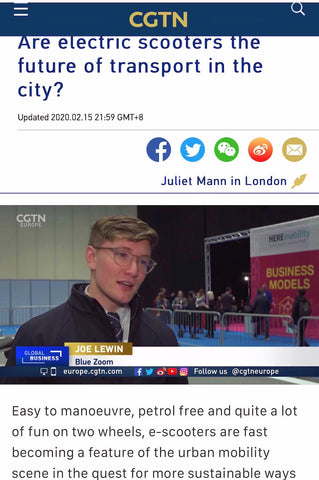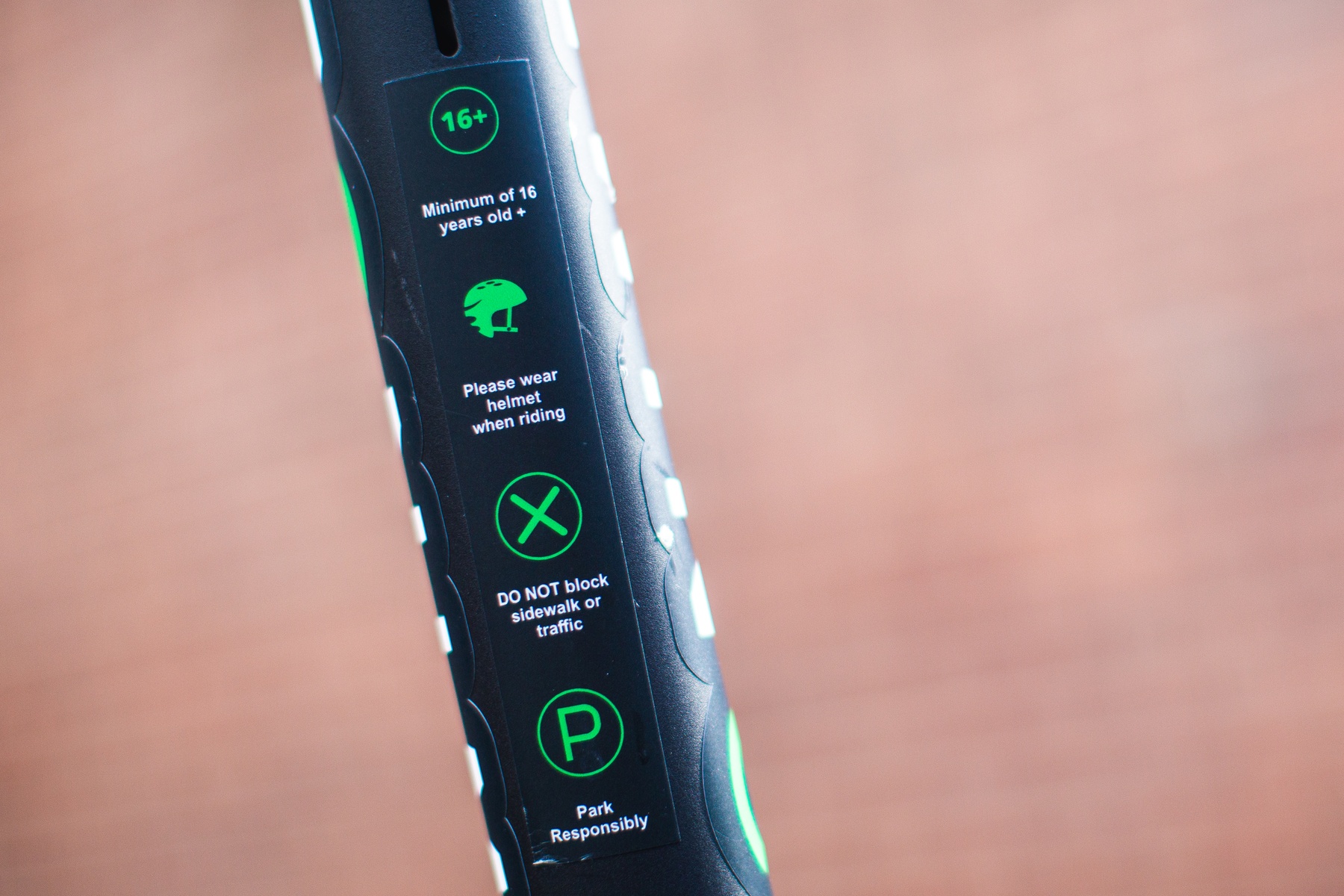It’s finally happening: e-scooters are coming to the UK! Covid-19 has rendered public transit high risk for the foreseeable future, making it hard to get around in large cities. The need for low cost, socially distant, single-occupancy travel has led to a surge in bike sales and bike ridership levels, especially as it gets us out of the house and into the fresh air. For essential workers, such modes have been a lifeline. And governments, recognising the opportunity to capitalise on a environmentally-friendly transport surge, have started pumping money into micro-mobility infrastructure such as LIT lanes, protected bike lanes, and even reducing car speed limits for safer riding, all in an effort to make this movement permanent. Milan is one city leading the charge on this front with 22 miles of streets being transformed to be micro-mobility and pedestrian safe.
The UK government is making sure to take advantage of the situation, pledging to invest $2 billion in a post-pandemic plan. Part of this new plan means the e-scooter trials that were forecast to begin next year have been accelerated by over a year to begin this month.
E-scooters’ have now been around in their Mobility-as-a-Service (MaaS) form for 3 years. The UK is late to the game considering most of Europe is already enjoying the benefits that these lightweight electric 2-wheelers bring to communities. Being late, however, might not be a bad thing. The UK now has the greatest opportunity since e-scooters first emerged at the end of 2017 to nail its implementation and ensure a more rapid progression towards the goal of a zero emissions transport system. Three strategies are vital if the UK wants to reach its goals in the shortest amount of time whilst ensuring the sustainable development of the industry: swappable batteries, dynamic fleet management, and modular vehicle design.

Swappable batteries is the most widely adopted strategy right now. When the MaaS e-scooter industry first sprung to life in 2017, operators had a very simplistic method of functioning. Operators brought in and deployed e-scooters, which were connected to an app. Operators used large marketing budgets to promote the app and vehicles to consumers to ride. Operators then contracted gig economy workers or specialised teams to collect the vehicles at night, recharge them, and redeploy them to the streets. It’s beautifully simple as a business — collect, recharge, deploy — however, poor unit economics left companies scrambling to find possible innovations within the business model. The collection and charging of vehicles using gig economy workers and teams presented one major point for improvement: downtime.
Most obviously, swappable batteries minimise downtime because vehicles don’t need to be hauled anywhere to be charged. Minus the 17 seconds it takes to swap the battery, uptime becomes all the time. Many companies are using e-vans or cargo e-bikes to make these battery swaps, which boosts the sustainability of operations and only adds to brand power. A less obvious benefit stems from the nature of gig work. The model companies employed meant workers were incentivised to collect as many vehicles as possible as quickly as possible. This kind of approach led to vehicles being damaged more so than they were just from riding. Swappable batteries remove this issue, and along with all the controversies surrounding gig economy worker rights at the moment, this is a change that operators are being very quick to make. Emissions are reduced by up to 90% as vehicles can remain on the street for weeks or even months at a time without needing to be collected and charged over night at a warehouse. Previously, this vehicle collection process had to take place most nights which meant higher costs and therefore less profitability.
Dynamic fleet management combines flexible permit sizes with data-driven assessments of e-scooter demand to enable the size of a city’s fleet to vary day-by-day to account for the variation in demand. Without such a system, when demand is low compared to the set fleet size, e-scooter “litter” — (illegally parked e-scooters) left laying flat in the middle of pavements will lead to a widespread backlash from local communities, as proven in Paris and Berlin. Consequentially, vehicle “litter” causes friction between operators and local authorities. The opposite end of the spectrum is less obvious and harder to quantify. Often consumers are left struggling to find a vehicle at peak times, sometimes having to end up walking a block or more for a vehicle. For the large percentage of consumers who don’t necessarily think about the environmental consequences of their actions in the present moment, this situation is often enough to justify turning to Uber instead. In short, when capacity outweighs demand, conflict arises between cities and operators on what should be done about e-scooter “litter,” and when demand far outweighs capacity, cities are missing out on the opportunity to capitalise on the benefits of micro-mobility: reduced traffic congestion, air pollution, and noise.
A dynamic fleet management system is used by a city to account for this variation, maximising the benefits and minimising the problems. The city starts by setting an initial fleet size per operator based on a certain metric (e.g. population density) as well as the parameters by which a fleet number can be increased or decreased. For example, if one operator sees an average of 4 rides per day of 8+ minutes when the average is 3 rides per day at 6+ minutes, that operator can feasibly add X more vehicles to their fleet relative to the demand increase. This is a simplified model: with the power of data and machine learning, increasingly complex calculations can be used to find desired fleet sizes. For cities, a regulated approach means minimal “litter” and backlash from communities. Over time, patterns emerge from implementing such systems, including an increased regularity of rides taken by individuals. We will see many Brits convert from being ‘occasional’ riders to monthly subscribers who may be using the e-scooters twice daily for their commute and then for fun at weekends. For operators, implementing systems to wield greater demand for their vehicles will maximise revenue and will provide the Department For Transport a validated case from which to evaluate the benefits of e-scooter rental schemes on behalf of communities.
Vehicle Design
Another critical factor to define the degree of success of e-scooters in the UK is the modular vehicle design. Unlike dynamic fleet management schemes, which must be largely city-driven, modular vehicle design stems from the operators themselves. Modular vehicle design is exactly as the name suggests — micro-mobility vehicles are made of many components which can be quickly removed and replaced when broken. Modular vehicle design is all about boosting uptime and minimising the many risks of putting vehicles out into the public. MaaS vehicles take a beating. Consumers don’t own the vehicles, and as a result are less careful with them. This leads to more scrapes, bangs, and bumps, and vehicles end up needing consistent TLC. When an operator needs to repair a vehicle, they have to go out into the city traffic with a van or e-cargo bike to collect it, bring it back through the traffic to the warehouse creating new costs. The vehicle then has to be fixed, which without a modular design can be tricky and time consuming. Then the vehicle has to be deployed back into the field, which means going back through the traffic. This process drastically hurts uptime and revenue generating opportunities, as it contains several unnecessary steps that add to downtime.
Modular vehicle design allows a mechanic to pull up, identify the problem, find the piece in the van or cargo bike, swap it, and move the next job. No more driving 4 ways through traffic or fiddly maintenance. And if a cargo e-bike is used, getting through the city traffic becomes a lot quicker. Furthermore, notice how both modular vehicle design and swappable batteries can employ a small electric van or cargo bike for sustainable, speedy operations. Many companies are beginning to combine both and hire permanent workers rather than gig economy workers to do so.
For all the operational performance boosts, growth towards positive unit economics, and increased brand power these improvements bring, there are hurdles. The ‘collect, recharge, deploy’ model companies have spent 3 years fine tuning is being turned on its head. Zwings (previously named Blue Zoom) is utilising dynamic systems, docking stations, modular vehicle design and patented swappable battery technology to deliver the mentioned benefits to communities and in turn, local authorities too.
With the UK being a fresh slate and late to e-scooter legalisation, now is the time to implement lessons gained from the industry’s prior years of experience. This is an opportunity for the UK government to lead the way in enabling sustainable MaaS micro-mobility whilst accelerating its efforts to kick start the green economic revolution off the back of Covid-19 consumer behavior changes. All 3 strategies will drive sustainable unit economics and will play important roles maximising the benefits micro-mobility brings for our urban centers, city dwellers, and the environment. Please do reach out if you have any further questions:
joe@zwings.co.uk

